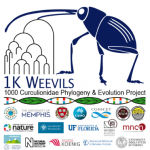by Kate Parsley
Ph.D. candidate
For those who don't know, plant awareness disparity (or PAD) used to be called "plant blindness," and is defined as the tendency not to notice plants in the environment around you. It's split into four different characteristics: attention (not noticing plants), attitude (not liking or caring about plants), knowledge (recognizing the importance of plants...or not), and relative interest
(how interesting you find plants in comparison to other organisms, like animals). It's a complex situation, and a big problem.

Plant awareness disparity might seem like it's harmless until you think about how much we benefit from plants (and what they do) on a daily basis. Plants are sources of food, medicine, clothing, shelter, and even oxygen. We benefit from their existence and use in many different ways. But what happens when we rely on plants, but don't acknowledge their importance or even notice that they're around?
We can (and often do) become very disconnected from the ecosystem around us if we become disconnected from plants in this way. We start to take them for granted, and just when we do, they start to disappear. Plant conservation is an issue not just because plants are disappearing faster than we can identify them, but also because we aren't the only ones who rely on plants... other animals do too. In fact, the vast majority of animals on the endangered species list are there because their habitats are disappearing. These habitats are mostly comprised of (you guessed it) plants.
Plants become even more important when we consider their implications for climate change. Plants absorb carbon dioxide and release oxygen as a by-product of photosynthesis (the purpose of which is to create glucose, a type of sugar that is a source of food for the plant). We need oxygen to live, and on top of that, we need plants to absorb carbon dioxide from the atmosphere. This need is especially pronounced because humans are responsible for a lot of extra carbon dioxide, so there's much more in the atmosphere than what could ever be considered, "normal." Unfortunately, we keep tearing down forests to use for our own purposes, or to make room for agricultural efforts, effectively ruining our carbon sinks.
We seem to have conflicting interests where plants are concerned. We rely on them for so many things (paper, food, etc.), which often requires us to tear them down. But we also rely on them for more general purposes (absorbing carbon dioxide, producing oxygen) which means we can't cut them all down or we won't be able to survive (not to mention the millions of other species on the planet that depend upon them too). Like I said, it's a complicated issue, and we have no chance of solving it if we continue to be unaware of plants and ignore that it's happening.
Some of you might be thinking: well how do we fix it? I'm a Ph.D. candidate here in the biology department, and I study botany education, meaning that my dissertation is about trying to answer that question. I've spent a lot of time thinking about the topic and I can safely say this: I don't know — yet. I do have some ideas, but it's a complicated question with a complicated answer.
Speaking of education: something we do know is that students who don't have good experiences with plants and plant mentors early in life often develop plant awareness disparity beginning in grade school and continue this trend all the way through college. A plant mentor is anyone who takes you under their wing and teaches you about plants in a context outside of school. These people are often family members, but can be scout masters, teachers, friends, or anyone! So, if you're concerned about a student in your life developing plant awareness disparity, here is one thing you can do to help: take them outside! Go to a botanical garden, go hiking, start a garden, anything that gets them outside and around plants can help ensure they recognize plants in their environment, and later on, they'll be more likely to retain related information from their teachers.
Plant awareness disparity isn't doing us any favors. Not only does it hurt us for the reasons above, but it reduces our capacity to do research and find ways to support plants (and, by extension, ourselves and the rest of the planet). If students are unaware of plants, they're less likely to learn about them (or even want to learn about them) which means they don't go to graduate school, learn how to do plant research, and find the next big plant-related innovation. We're cheating ourselves out of some very important and exciting scientific innovations, especially when you add in the fact that plant research gets funded less often than many other kinds of research!
For more information about plant awareness disparity, you can check out this new publication I wrote where I develop the term and explain it in more detail: https://nph.onlinelibrary.wiley.com/doi/10.1002/ppp3.10153
You can also check out my blog (which this post is modified from): https://plantawarenessdisparity.wordpress.com/
Or follow me on Twitter:
@KateParsley_
#PADisBAD
#PlantAwarenessDisparity
-Kate Parsley (Ph.D. Candidate, Sabel Lab)













